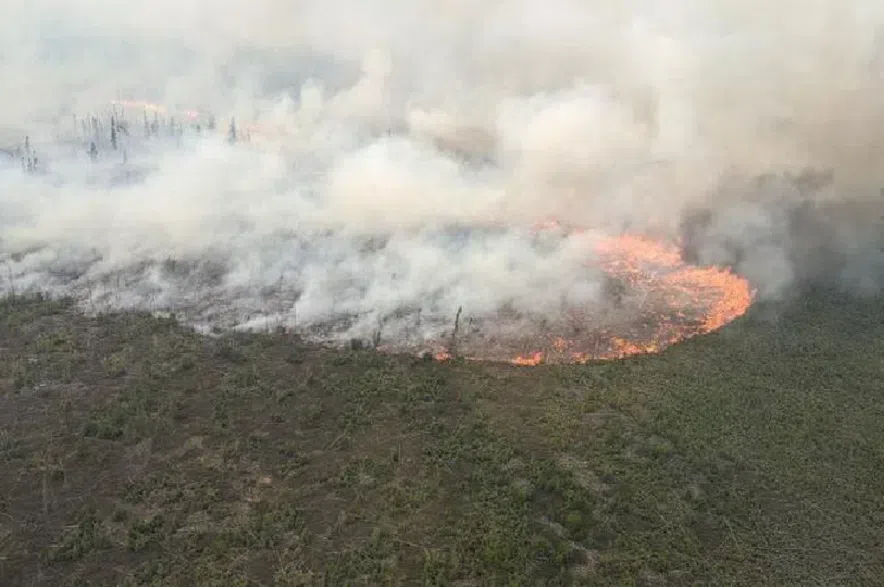The Saskatchewan Public Safety Agency has lifted its provincial fire ban.
The ban, which covered all Crown lands north of the provincial forest boundary stretching north to the Churchill River, along with the Northern Saskatchewan Administrative District, was officially lifted at 11 p.m. on Wednesday thanks to improved conditions.
Read more:
- Wicked weather brings hail, strong winds and funnel clouds to central Sask.
- Fire ban to remain in place after rain fails to quench fires in northern Saskatchewan
- Family of man bit by rattlesnake in Texas ‘trying everything’ to get him home to Sask.
The ban had been in place since July 10 due to dry conditions that helped fuel an intense wildfire season in the province.
But while the provincial ban has been lifted, that doesn’t mean that all fire bans have been removed.
“The public is reminded that provincial parks, municipalities and R.M.s may still have their own local fire ban, restriction or advisory in place,” the agency noted in a statement.
“Municipalities and provincial parks should continue to monitor local conditions and implement fire bans or burning restrictions as required.”
A list of fire restrictions in provincial parks and at recreation sites can be accessed through the SaskParks website and the agency’s interactive fire ban map.
There are currently 79 active wildfires burning in Saskatchewan, according to data published on the public safety agency’s website. So far this season, the province has seen 466 wildfires, which is well ahead of the five-year average of 372. Eight communities are under active evacuation orders.
SPSA pleased with the rainfall
Steve Roberts, vice-president of operations with the SPSA, said all areas in the northern forest have received between 5-20 millimetres of rain over the past few days.
“It’s really allowing us to shift our efforts on the fires that still pose the most risk,” he said.
Due to an improvement in fire activity, Roberts said some of the firefighting crews and equipment have been sent back home, including Australian crews, two air tankers from Quebec and a three-helicopter support aircraft with the Canadian Armed Forces.
There is still help from Quebec, Parks Canada, Ontario, Yukon, Mexico and North Dakota, and the Canadian Armed Forces helping tackle blazes in the north.
“The change in fire behaviour is welcomed by the crews because they can be more productive,” Roberts said. “It’s not as high risk, it’s not as problematic for them.”
Crews are still battling out-of-control flames near communities like Beauval, Weyakwin, and Ramsay Bay.
Roberts said this wildfire season has seen the largest number of evacuations, totalling 38 communities so far. He said it has also seen the largest amount of losses in Denare Beach and East Trout Lake.











